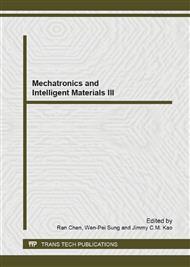p.1898
p.1902
p.1907
p.1911
p.1915
p.1919
p.1923
p.1928
p.1932
Study of Speaker Recognition Based on Multiclass Core Vector Machine
Abstract:
In the process of speaker recognition, specific algorithm is adopted to classify differentspeakers. In this paper, Multiclass Core Vector Machine (MCVM) is used to the solve speakerrecognition problem. At first, CVM transform quadratic programming of traditional SVM into theMinimum Enclosing Ball (MEB) problem, which significantly reduces the complexity ofcomputation and then, defining an SVM with vector valued output. At last, Experimental results showthat the algorithm is feasible and effective for speaker recognition.
Info:
Periodical:
Pages:
1915-1918
Citation:
Online since:
June 2013
Authors:
Price:
Сopyright:
© 2013 Trans Tech Publications Ltd. All Rights Reserved
Share:
Citation:


